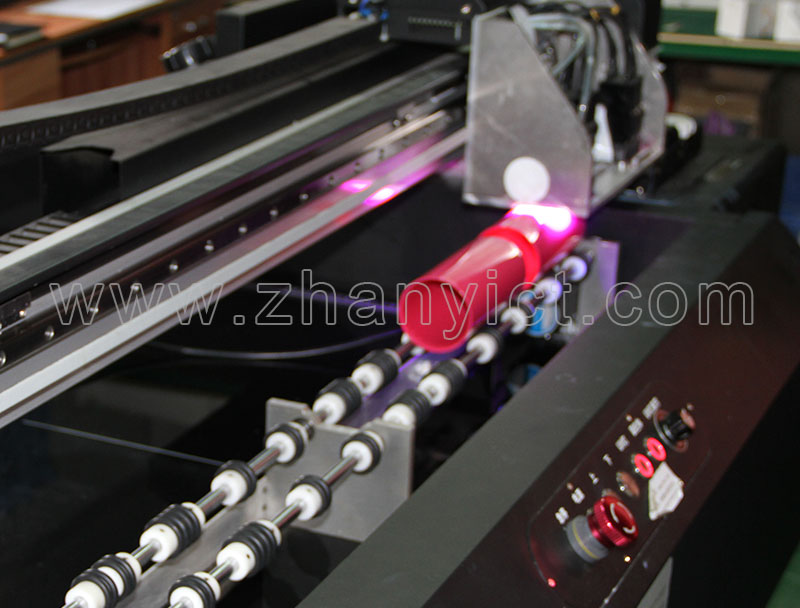What Are the Secrets and Practical Tips for Printing on Water Bottle Surfaces? (Part 1)
There are stories in every cup, and warmth in every life. Hello everyone, "Dong Dong's Cup Talk" is here! Back in 2023, I shared with you the different methods for printing patterns on stainless steel water bottle surfaces. http://www.zhanyict.com/en/ProductsDetail-VB-10500.htmlHowever, due to my limited expertise in printing at the time, the feedback was minimal.
Today, I’ve specially invited Mr. Peng, a professional in heat transfer printing, to share his insights from a technical perspective. Given the highly specialized nature of the content, I’ve done my best to edit it, but there may still be some imperfections—please bear with me. http://www.zhanyict.com/en/ProductsDetail-VB-10500.htmlAlso, due to the extensive content, I’ll divide it into two parts for you.
1. Core Principles of Heat Transfer Printing (Illustrated)
1. Essence of Heat Transfer Printing:
Using high temperatures (200–230°C) and pressure (8–15 kg/cm²), http://www.zhanyict.com/en/ProductsDetail-VB-10500.htmlthe pattern layer on the PET carrier film is "ironed" onto the cup surface (similar to how temporary tattoos transfer with heat).
2. Three Critical Factors:
- Temperature:
- Stainless steel: 220–230°C (fast heat conduction)
- Plastic (PP/PC): 190–200°C (to prevent deformation)
- Time:
- Stainless steel: 15–20 seconds
- Plastic: 10–12 seconds (Failure case: http://www.zhanyict.com/en/ProductsDetail-VB-10500.htmlA plastic cup exceeded the time by 3 seconds, causing the rim to collapse)
- Pressure:
- Stainless steel: 12–15 kg/cm² (high density requires strong pressure)
- Plastic: 8–10 kg/cm² (to avoid indentations)
2. Secrets to Achieving 3D Embossed Effects
1. Specialized Embossed Transfer Film:
- The film contains a 0.1–0.3 mm thick UV embossed adhesive that forms a 3D texture after heating (costs 40% more than standard film).
- Success case: http://www.zhanyict.com/en/ProductsDetail-VB-10500.htmlStarbucks’ zodiac cups use a three-layer embossed film for distinct tactile layers.
2. Mold-Assisted Shaping:
- Carve concave-convex textures (0.2–0.5 mm deep) into silicone transfer heads, then apply secondary pressing for a 3D effect.
- Failure case: http://www.zhanyict.com/en/ProductsDetail-VB-10500.htmlA factory didn’t account for silicone thermal expansion—mold swelling at 200°C blurred the pattern.
3. Critical Differences Between Stainless Steel and Plastic Printing
Stainless Steel Cups
- Pre-treatment: Requires epoxy primer coating (5–8 μm thick).
- Temperature Sensitivity: Heat-resistant (can withstand up to 250°C).
- Adhesion Test: http://www.zhanyict.com/en/ProductsDetail-VB-10500.htmlCross-cut test with a lattice cutter + 3M tape peeling—no detachment.
Plastic Cups
- Pre-treatment: Requires flame treatment/corona treatment (surface energy ≥ 42 dynes).
- Temperature Sensitivity: http://www.zhanyict.com/en/ProductsDetail-VB-10500.htmlPC material begins softening above 130°C.
- Adhesion Test: 500 alcohol rubs without exposing the base layer.
Painful Lessons:
- A stainless steel cup skipped primer coating—http://www.zhanyict.com/en/ProductsDetail-VB-10500.htmlthe entire pattern peeled off after 3 days (loss: 100,000 units).
- A PP cup used corona treatment instead of flame treatment—adhesion dropped by 70% (25% post-sale complaint rate).

Dongguan Zhanyi Commodity Technology Co., Ltd. specializes in the production of metal cups, plastic cups, coffee cups, suction mug, lunch boxes, food jar, travel mugs, portable water bottles, sports bottles, home life desktop trash cans, thermos bottles, etc.These products are all our annual exports, and are recognized and loved by the US, Europe, Australia, Japan, South Korea, Taiwan, Hong Kong and other consumers. Support for small quantity order, fast customization.